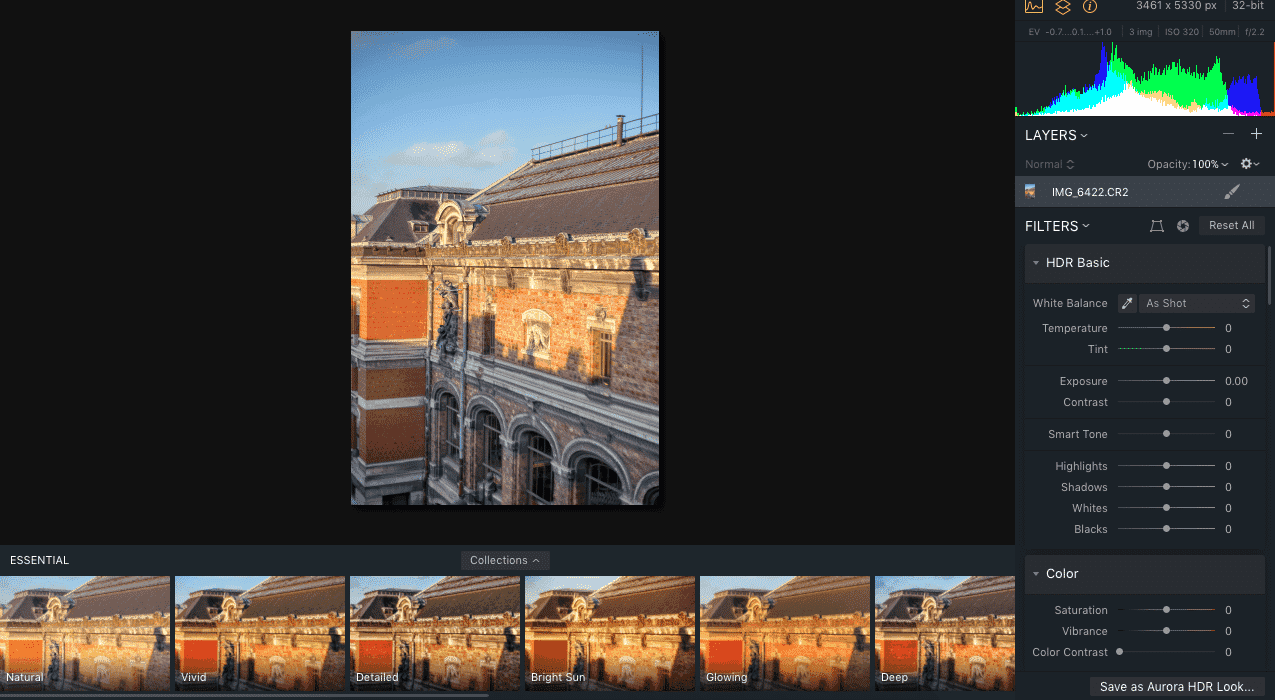

The Polarizing Filter setting will help you get those deep blue skies that you’d get if you were to use a polarizing filter on your camera. If you prefer more natural results, just keep this at 0. Basically it adds a glowy effect which is how people create those soft and dreamy HDR photos. For example, I usually like to set the Boost between 50-100% so that I can see what’s happening and then lower it back down to 0 when I’m done. You can fine tune how much smoothing it does and the Boost setting is useful for seeing what’s happening. HDR Denoise reduces noise using their algorithm that tries to preserve edge details. These settings can emphasize noise in your photo depending on how much of it you use. The HDR Microstructure setting targets the finer surface details. It’s a great way to add contrast to the edges.

HDR Structure is sort of like the Clarity setting in Lightroom. Smart Tone lets you recover details in the highlights or shadows.

As you can see, there’s a ton of dynamic range that we can work with and the photos blend together very well.

I’m going to start by adjusting the exposure. I’m going to choose this one here as a starting point and start editing the settings. I’m going to go into the categories and let’s check out some of Trey Ratcliff’s presets.Īs you can see, there’s a preview of each effect and if you hover over it, you can adjust the opacity. Aurora HDR comes with tons of presets that you can pick from. I like to start off with the presets at the bottom. Once your photo is loaded, you can start editing.
Aurora hdr 2018 back to lightroom software#
It works both as a standalone software and a plugin. By the way, if you use Lightroom, you can also load the photos directly from Lightroom to Aurora HDR. It’ll take awhile to load depending on how many exposures you have and the resolution.
Aurora hdr 2018 back to lightroom full#
A lot of times when you’re taking pictures, your camera cannot capture the full dynamic range leaving you with flaws such as overexposed skies.


 0 kommentar(er)
0 kommentar(er)
